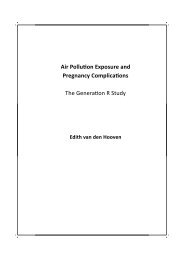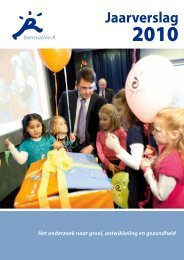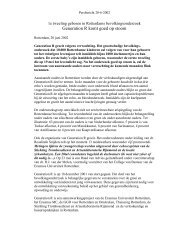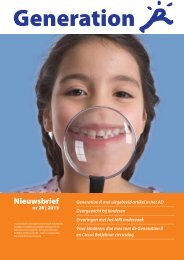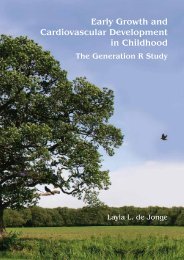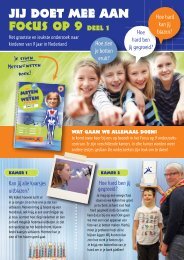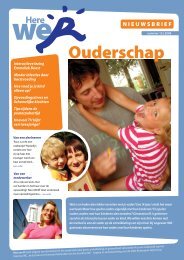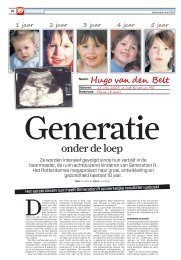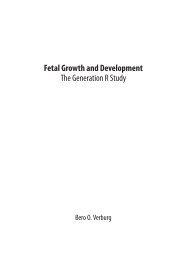Parents and infants: determinants of attachment in a ... - Generation R
Parents and infants: determinants of attachment in a ... - Generation R
Parents and infants: determinants of attachment in a ... - Generation R
You also want an ePaper? Increase the reach of your titles
YUMPU automatically turns print PDFs into web optimized ePapers that Google loves.
Attachment, depression, <strong>and</strong> cortisol: Deviant patterns <strong>in</strong> <strong>in</strong>secure-resistant <strong>and</strong> disorganized <strong><strong>in</strong>fants</strong><br />
For stress reactivity a delta was calculated between the last sample (cortisolpostSSP<br />
) <strong>and</strong> the first sample (cortisol ). The second assessment, just after<br />
preSSP<br />
the SSP, was not used, as it was too close to the onset <strong>of</strong> stress to show an<br />
<strong>in</strong>crease. To control for the Law <strong>of</strong> Initial Values (LIV; Wilder, 1968), which<br />
states that the direction <strong>of</strong> response <strong>of</strong> a body function depends to a large<br />
degree on the <strong>in</strong>itial level <strong>of</strong> that function, <strong>in</strong> subsequent analyses this delta<br />
was adjusted for the first sample.<br />
Maternal lifetime depression. The Composite International Diagnostic<br />
Interview (WHO, 1990) version 2.1 was conducted dur<strong>in</strong>g a home-visit at<br />
30 weeks <strong>of</strong> pregnancy to assess lifetime prevalence <strong>of</strong> psychiatric disorders<br />
<strong>in</strong> the pregnant women. The CIDI is based on the def<strong>in</strong>itions <strong>and</strong> criteria <strong>of</strong><br />
the DSM IV; good to excellent psychometric properties have been reported<br />
(Andrews & Peters, 1998; Wittchen, 1994). Interviewers had been tra<strong>in</strong>ed<br />
at a WHO tra<strong>in</strong><strong>in</strong>g center. The mother’s partner was not present dur<strong>in</strong>g<br />
the <strong>in</strong>terview. In the current study we used lifetime diagnoses <strong>of</strong> unipolar<br />
depressive disorder. Unipolar depressive disorder was def<strong>in</strong>ed as diagnoses<br />
<strong>of</strong> dysthymia, a s<strong>in</strong>gle episode <strong>of</strong> major depression (mild, moderate or<br />
severe) <strong>and</strong> recurrent major depression (mild, moderate or severe).<br />
Results<br />
Attachment<br />
The distribution <strong>of</strong> the <strong>attachment</strong> classifications was as follows: 57.8% secure<br />
(n = 413), 19.0% avoidant (n = 136), 23.2% resistant (n = 166). Of all children,<br />
22.5% were classified as disorganized (n = 162), 77.5% were non-disorganized<br />
(n = 559). No differences were found between the distribution <strong>of</strong> the complete<br />
group (N = 721), <strong>and</strong> the group for which data on cortisol reactivity or cortisol<br />
diurnal rhythm was available (respectively 2 (3, N = 721) = 4.11, p = .25; 2<br />
(3, N = 721) = 4.15, p = .25).<br />
<br />
93



